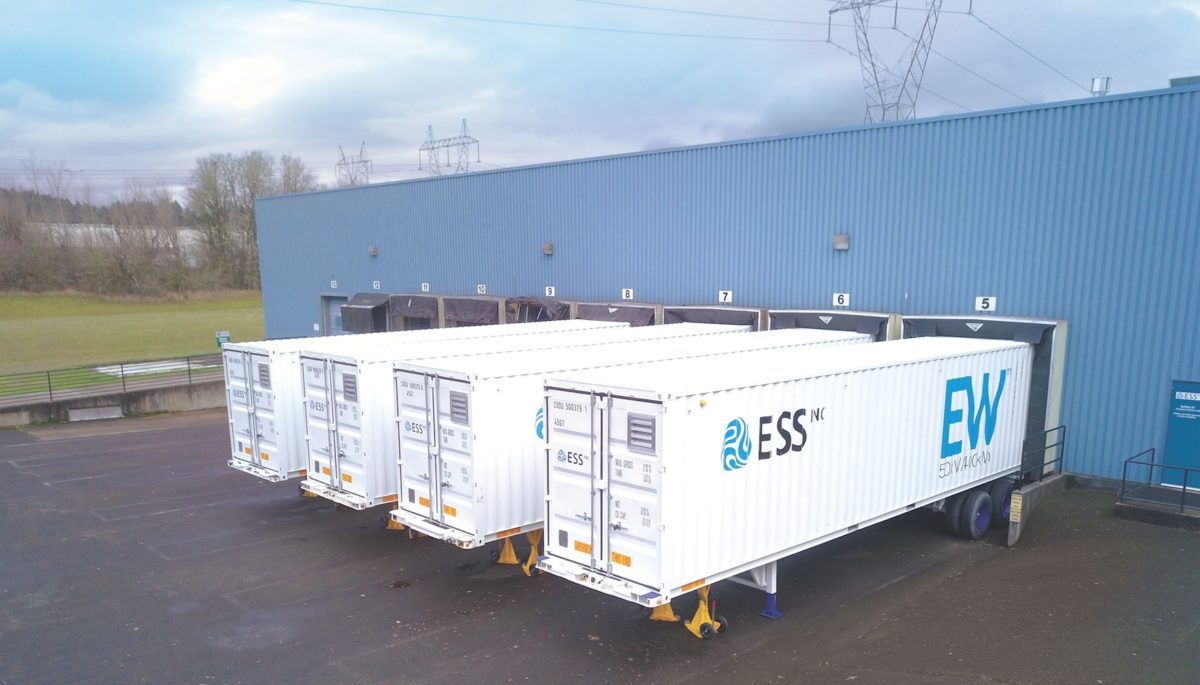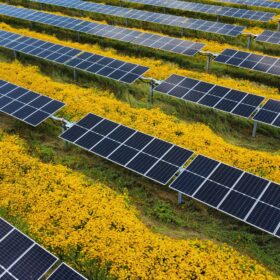ESS Tech Inc., a manufacturer of long-duration energy storage systems for commercial and utility-scale projects, announced its S200 battery module system used in its Energy Warehouse product achieved the Underwriters Laboratories’ (UL) 1973 standard for safety.
UL 1973 is an industry standard recognition for stationary energy storage systems which confirms the module’s quality, resilience and ability to operate safely and effectively in a variety of conditions. The S200 modules power ESS systems the Energy Warehouse and Energy Center product lines.
The safety recognition follows the 2022 receipt by ESS of the UL 9540A standard, demonstrating the company’s systems pose no risk of thermal runaway, making the company’s energy storage products a preferred choice for installation in regions prone to wildfires or adjacent to populated areas.
Recent use cases illustrating the advantages of ESS’ iron and saltwater flow battery technology include a January deployment by Amsterdam Airport Schiphol to provide a battery system that will enable electrification of the airport’s ground operations. The safety profile of the ESS technology was a key factor in the selection given the proximity to passenger aircraft at the airport facility.
In February, ESS announced the delivery of an Energy Warehouse system to the Turlock Irrigation District in Central California. The energy storage company will deploy a few Energy Warehouse containers to pair with solar panels over irrigation canals. The solar-plus-storage project will shade canals with solar panels, a process that will reduce evaporative losses while generating clean energy.
In addition, ESS was selected by the Sacramento Municipal Utility District (SMUD) to deliver up to 2 GWh of energy storage systems in support of the utility’s 2030 Clean Energy Vision. ESS systems will be deployed across SMUD’s grid in the coming years.
The company’s iron flow technology provides cost-effective, long-duration energy storage ideal for applications that require up to 12 hours of flexible energy capacity. ESS systems provide resilient, sustainable energy storage suited for multiple use cases including utility-scale renewable energy installations, solar plus storage microgrids, solar load-shifting and peak shaving, and other ancillary grid services.
Long-duration storage systems of more than four-hour discharge are increasingly deployed in states with high solar penetration. After California, additional utility offtakers include NV Energy in Nevada, Georgia Power, Orlando Utilities Commission and Minnesota’s Great River Energy, according to Julia Souder, executive director of the Long Duration Energy Storage Council.
According to BloombergNEF estimates, the federal Inflation Reduction Act is expected to drive an additional 6.6 GW / 26.4 GWh of new energy storage capacity in the California Independent System Operator (CAISO) market through 2030, even though Texas is forecast to add a higher amount of storage systems, at 8.9 GW / 35.6 GWh of additional capacity.
Unlike typical lithium-ion batteries that are packaged as fixed cells or modules, a flow battery such as the Energy Warehouse allows power to be decoupled from the capacity, allowing users the flexibility of using the battery for a variety of use cases simultaneously on a project.
The ESS warehouse container provides 400 kWh of peak energy in a module whose average life is more than 20,000 cycles. The container weighs 41.9 tons at wet weight and measures 40 feet by 8 feet, standing 9.5 feet high. The system uses recycled iron components and abundant saltwater, making its electrolyte system fully recyclable.
This content is protected by copyright and may not be reused. If you want to cooperate with us and would like to reuse some of our content, please contact: editors@pv-magazine.com.









By submitting this form you agree to pv magazine using your data for the purposes of publishing your comment.
Your personal data will only be disclosed or otherwise transmitted to third parties for the purposes of spam filtering or if this is necessary for technical maintenance of the website. Any other transfer to third parties will not take place unless this is justified on the basis of applicable data protection regulations or if pv magazine is legally obliged to do so.
You may revoke this consent at any time with effect for the future, in which case your personal data will be deleted immediately. Otherwise, your data will be deleted if pv magazine has processed your request or the purpose of data storage is fulfilled.
Further information on data privacy can be found in our Data Protection Policy.